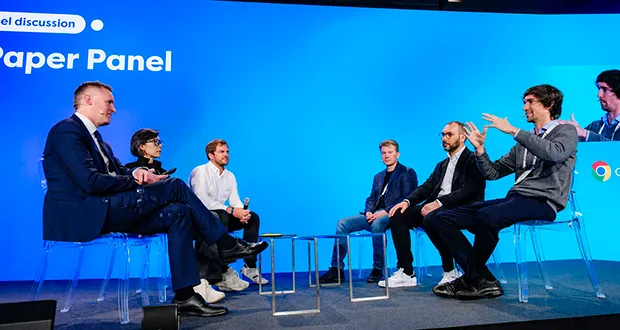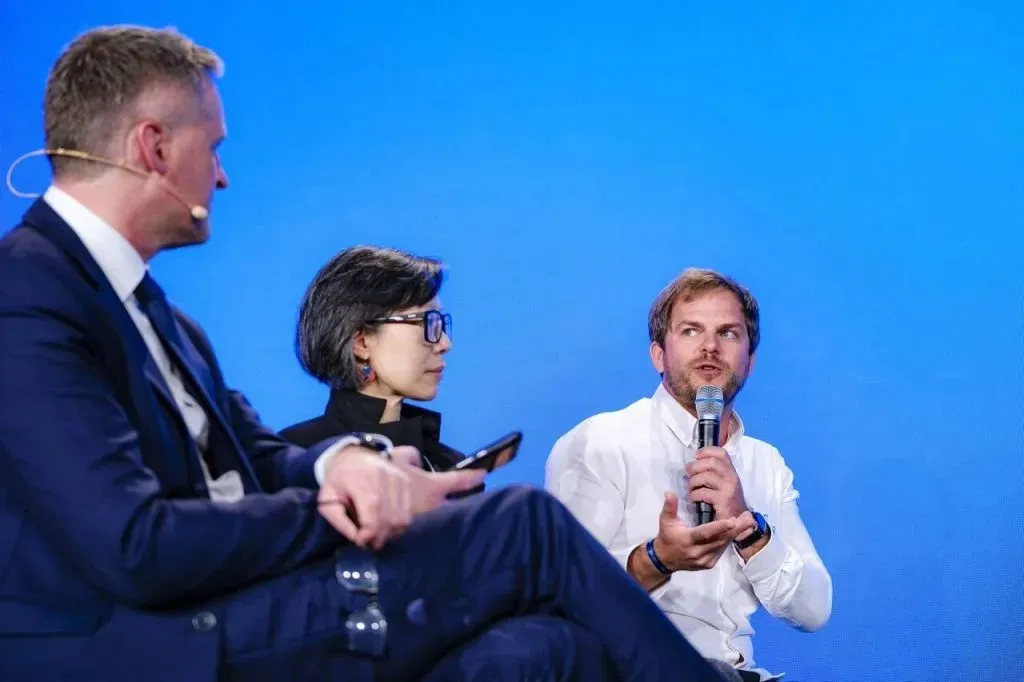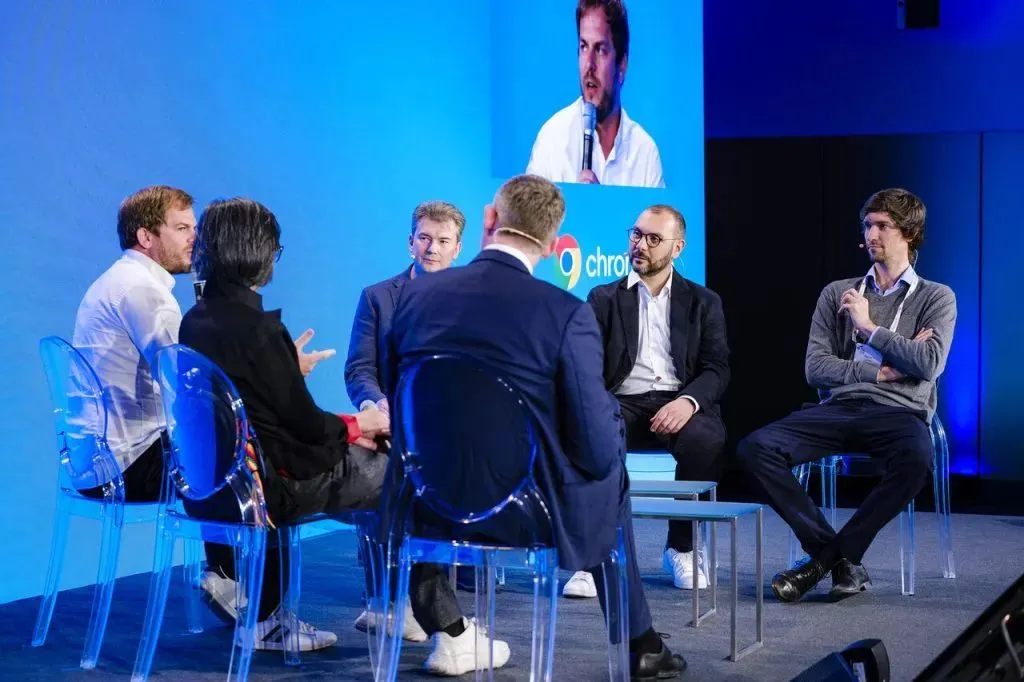This was a key message from a panel debate at Digital Signage Summit Europe which saw a big market for epaper in retail, corporate and digital art applications.

Innovation in epaper display technology needs to focus first on factors such as stability of colour before moving on to the ability to show video.
This was the standout recommendation made by Martin Lienau, product manager for large format displays at Sharp/NEC, at a recent panel discussion on epaper.
Lienau was speaking at a discussion held at Digital Signage Summit Europe.
Also taking part were speakers from panel manufacturer E Ink, Samsung, PPDS and CMS provider Cenareo.
In addition to colour stability, next steps should involve reducing cost and educating a market which still did not have a complete understanding of epaper, Lienau said.
In the meantime, the market had other display options for use with video content.
Earlier in the discussion, Hui Lee, president of E Ink Netherlands, told the audience, "better colour is definitely part of our technology roadmap".
A second key area of development was widening the range of temperatures epaper displays can operate in.
Currently, E Ink's outdoor epaper panels can operate from -15C to 65C, but the company is working on getting the upper limit up in to the 70s and 80s.
A third area of development was increasing the size of displays. E Ink currently offers a 31.5" display and has recently announced a 75" display.
In addition, E Ink was looking to reduce the size of lines between modules. The company had shown a panel with a bezel size of just one millimetre at Display Week in San Jose earlier this month, opening up possibilities for larger displays.

With video described as "the elephant in the room" by panel moderator Florian Rotberg, managing director of invidis consulting, Lee said there had been some progress with the ability to show video and further work was on the to-do list.
"We can already show animations. We can achieve 30 frames per second. We can even achieve 45 frames per second, and we are working hard to reduce ghosting issues," Lee said.
For the technology to be sold in to the marketplace, there is a need to work on the expectations not just of channel partners but end users, said Lienau of Sharp/NEC.
Some people expected epaper displays to be like LCD or LED. "They expect it to be a flawless integration but it is not. It's a different technology. It's a different thought frame. The content creation is different," Lienau added.
And when it comes to sales, we are still in the ramp-up phase for the technology.
"There is a price to pay if you want to be first. If you wait two years, most likely you will pay half," said Lienau.
On the question of sales, Andrea Barbuti, global product management lead for signage at PPDS, said customers were attracted to epaper because of its low power consumption, sustainability and lower TCO.
This made acceptance easier but there was still training to do, as many still asked about the brightness of epaper displays when they do not emit light.
This was a question that customers also posed to Dmitry Rozol, sales engineer at Samsung, even in tender documentation, which was most probably a holdover from LCD.
He had tried different explanations to deal with the challenge. Now he uses a formula, involving the reflection rate and the ambient light level, to arrive at a proxy for brightness.
Rozol said Samsung had spoken to hundreds of customers about epaper, at ISE and at a roadshow before the exhibition, and many were excited about the technology.
When considering sales, David Keribin, cofounder and CEO at Cenareo, said it was important to think about what the customer wanted to replace.
"They don't want videos, because they want to replace paper," he said. "It's not about replacing screens."
Keribin thought epaper displays would become a booming industry, replacing print, even if for now we are at the beginning of this change.
One advantage that epaper offered over dead-tree paper was the ability to track whether content was actually being displayed as planned.
You could also double or treble the speed with which you changed content.
Speaking about poster site owners, he said: "If they do that, they can maybe double or treble revenue per asset."

Epaper displays have found an early use in transportation, at bus stops, and Sharp/NEC had an A0 size demo of a bus stop display at ISE.
This was an example of the way in which epaper displays will not replace LCD, but complement it, said Lienau.
It also provided an opportunity for displays to offer extra information options, e.g. emergency information or digital signage functionality in addition to timetables.
Looking at where the market is, Barbuti of PPDS said most applications were currently indoors but there was definitely big potential for outdoor displays.
Epaper displays could be made visible at nighttime by placing LEDs on the casing, along the edge of the display, which was still a low-power option.
Questions about the visibility of epaper displays at night were something that Lee of E Ink also dealt with.
"Normally, we ask the customer, 'what do you do with paper?'"
The answer is not that complicated, Lee said. You just put some light around the display.
As for which markets had most potential for the adoption of epaper displays, Samsung's Rozol said retail was number one. After that, the corporate market would be important because of KPIs around sustainability.
"They are trying to achieve those KPIs, no matter what. For them, money is not a big issue," he said.
In addition to retail and corporate, E Ink's Lee said there had also been a lot of interest in the use of epaper for digital art in hotels, museums, hospitals and at public events. LCD and LED didn't give the same paper-like feedback customers were looking for in art.
Also seeing retail as the biggest market, was Keribin of Cenareo but he said customers were looking for exact replacements for paper sizes, such as A2, A3 and A4, rather than typical screen sizes.
Barbuti from PPDS said the company had also been asked for standard paper sizes, in addition to 16:9, but which was right depended on the application.
"When we introduce epaper displays in the same ecosystem that we use for digital signage, then 16:9 is the answer, because the content is ready," he said. "This is not replacing paper. It's giving flexibility to the content, to change it and build it dynamically."
Participate in the 2025 ePaper Global Award for Innovative ePaper Product Collection, please refer to the following: https://inn.epaperia.com/indexen.html








